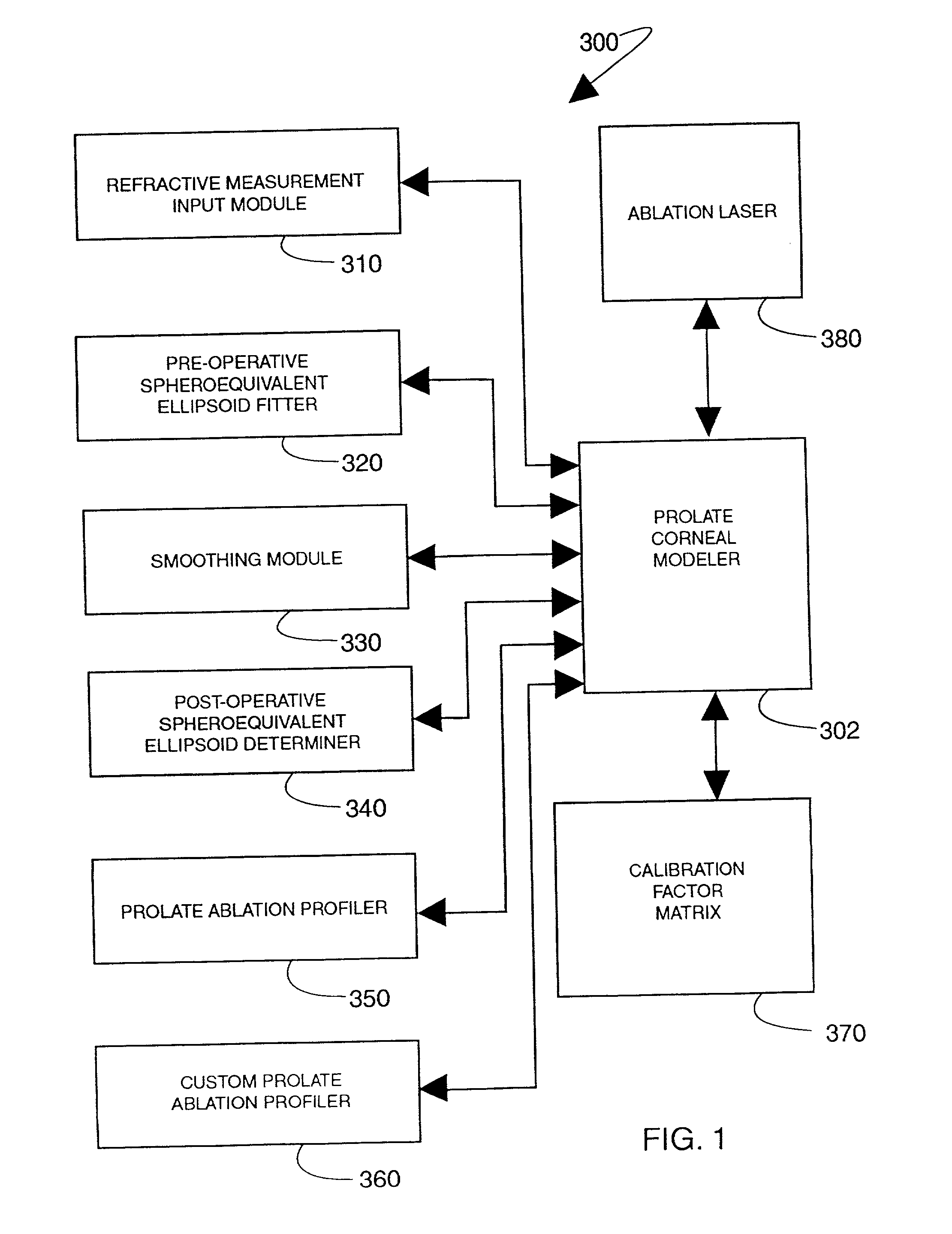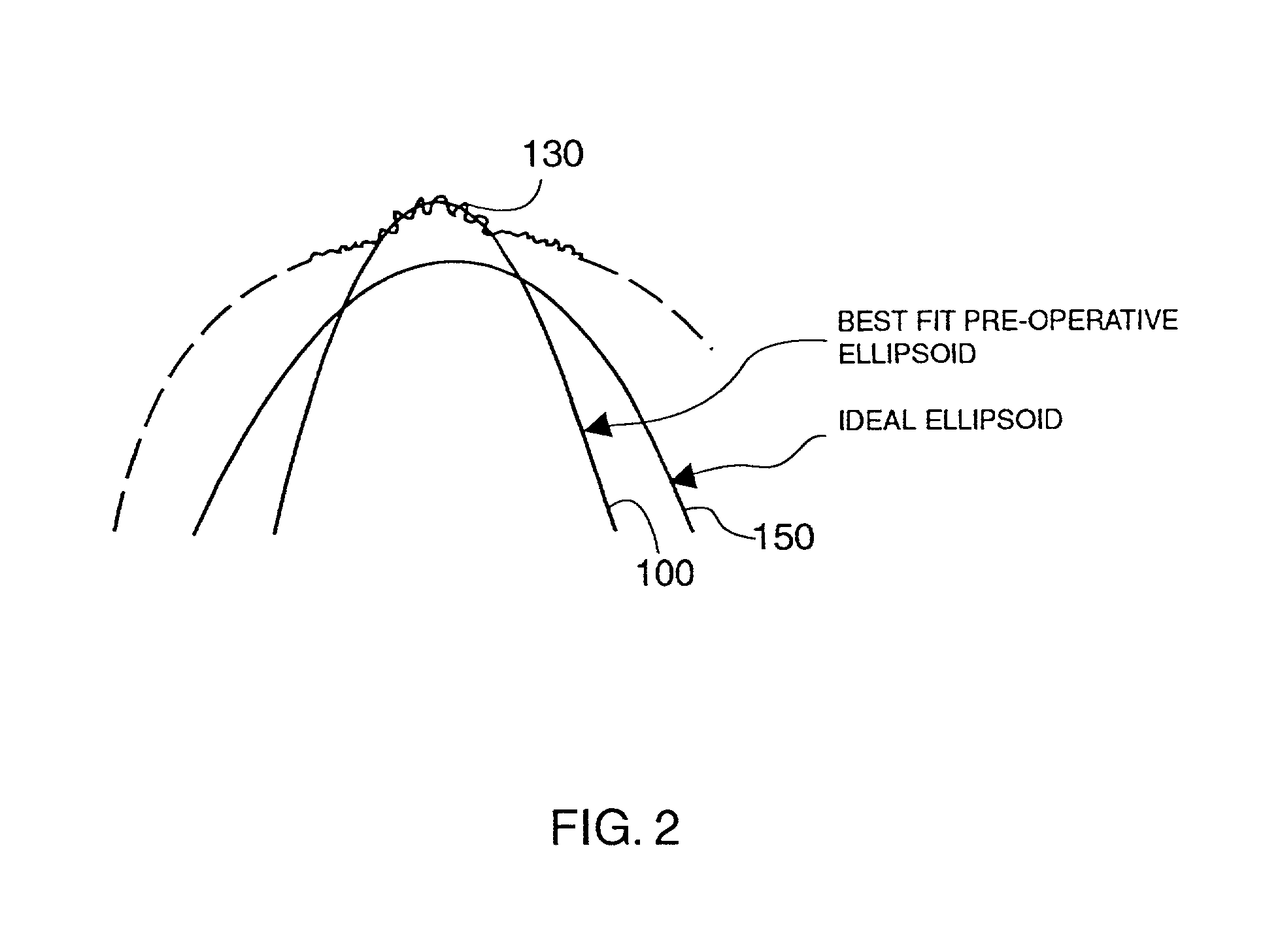Keratometric to apical radius conversion
a technology of apical radius and keratometrics, which is applied in the field of human corneal refractive surgery, can solve the problems of not having the resolution necessary to achieve optimal refractive, not being able to achieve the accuracy required for shape, and not being able to precisely spherical the cornea
- Summary
- Abstract
- Description
- Claims
- Application Information
AI Technical Summary
Problems solved by technology
Method used
Image
Examples
Embodiment Construction
[0030] The present invention provides apparatus and techniques for performing prolate shaped corneal reshaping. In accordance with the techniques, a spheroequivalent ellipsoid model is implemented to provide a pre- and post-operative approximation of a cornea, and a desired prolate shaped ablation profile is determined based on a desired ellipsoidal shape. In accordance with the principles of the present invention, the ellipsoid model has only three degrees of freedom (not four as in a conventional biconic) to define a desired ablation profile, providing extremely accurate and predictable long term vision correction.
[0031] To arrive at an ellipsoid model having only three numbers of freedom, a spheroequivalent (SEQ) value of eccentricity .epsilon. or asphericity Q (1+Q.sub.SEQ)=(1-.epsilon..sub.SEQ.sup.2) where Q.sub.SEQ=-.epsilon..sub.SEQ.sup.2, is generated. The eccentricity .epsilon. value replaces two numbers of freedom (i.e., eccentricities) in an otherwise conventional biconic...
PUM
 Login to View More
Login to View More Abstract
Description
Claims
Application Information
 Login to View More
Login to View More - R&D
- Intellectual Property
- Life Sciences
- Materials
- Tech Scout
- Unparalleled Data Quality
- Higher Quality Content
- 60% Fewer Hallucinations
Browse by: Latest US Patents, China's latest patents, Technical Efficacy Thesaurus, Application Domain, Technology Topic, Popular Technical Reports.
© 2025 PatSnap. All rights reserved.Legal|Privacy policy|Modern Slavery Act Transparency Statement|Sitemap|About US| Contact US: help@patsnap.com



